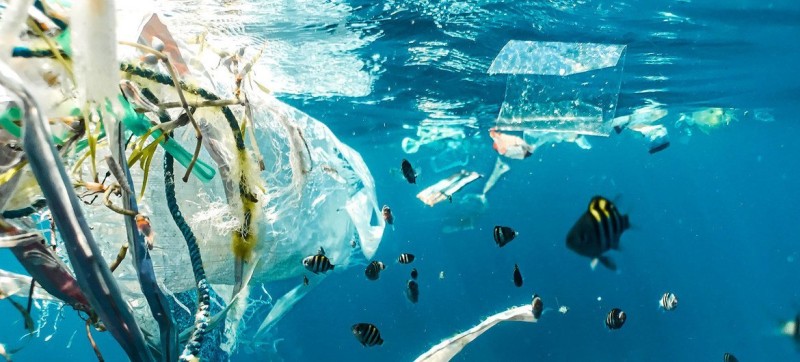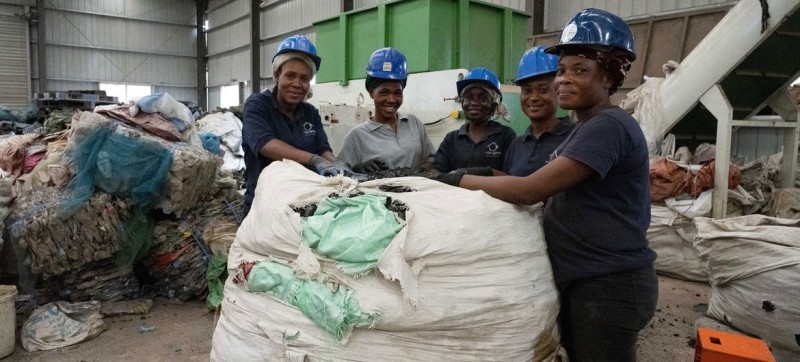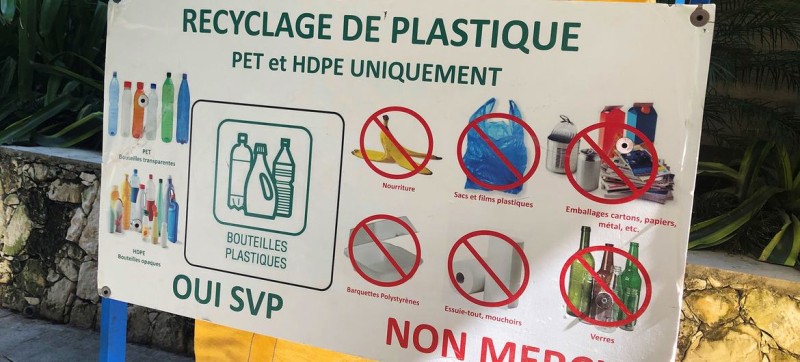Play video

Unsplash/Naja Bertolt Jensen Marine debris, including plastics, paper, wood, metal and other manufactured material, is found on beaches worldwide and at all depths of the ocean.
“The way we produce, use, and dispose of plastics is polluting ecosystems, creating risks for human health and destabilizing the climate,” said UNEP Executive Director Inger Andersen.
Tweet URL
‘Roadmap’ to slash plastic pollution
“This UNEP report lays out a roadmap to dramatically reduce these risks through adopting a circular approach that keeps plastics out of ecosystems, out of our bodies, and in the economy,” she said.
The report, Turning off the Tap: How the world can end plastic pollution and create a circular economy, outlines the magnitude and nature of the changes required to end plastic pollution and create a sustainable circular economy that is friendly to humans and the environment.
Changing the system
The report proposes a system change achieved by accelerating three key shifts – reuse, recycle, and reorient and diversify – and actions to deal with the legacy of plastic pollution.
Even with the measures above, 100 million metric tons of plastics from single use and short lived products will still need to be safely dealt with annually by 2040, the report found.
Building circular economy
UNEP suggests setting and implementing design and safety standards for disposing of non-recyclable plastic waste and making manufacturers responsible for products shedding microplastics.
Overall, the shift to a circular economy would result in $1.27 trillion in savings, considering costs and recycling revenues. A further $3.25 trillion would be saved from avoided externalities such as health, climate, air pollution, marine ecosystem degradation, and litigation-related costs.

© UNICEF/Milequem Diarassouba Plastic bricks are being made out of recycled plastic waste at a factory in Abidjan, Côte d’Ivoire.
Creating 700,000 jobs
Such a shift could result in a net increase of 700,000 jobs by 2040, mostly in low-income countries, significantly improving the livelihoods of millions of workers in informal settings, the report said.
Investment costs for the recommended systemic change are significant, but below the projected spending if systematic change is not undertaken: $65 billion per year versus $113 billion per year.
Much of this can be mobilized by shifting planned investments for new production facilities or a levy on new plastic production into the necessary circular infrastructure.
Finite timeframe
However, the report warned that time is of the essence. A five-year delay may lead to an increase of 80 million metric tons of plastic pollution by 2040.
Serving as a solutions-focused analysis of concrete practices, market shifts, and policies that can inform government thinking and business action, the report found that the highest costs in both a throwaway and circular economy, are operational.
With regulation to ensure plastics are designed to fit a circular model, extended producer responsibility schemes can cover operational costs of ensuring the system’s integrity through requiring producers to finance the collection, recycling, and responsible end-of-life disposal of plastic products.

UN Haiti/Daniel Dickinson A plastic recycling collection point in Port-au-Prince, Haiti.
Unlocking business opportunities
Internationally agreed policies can help to overcome the limits of national planning and business action, sustain a flourishing circular global plastics economy, unlock business opportunities, and create jobs, the report showed.
The report recommends that a global fiscal framework could be part of a policy pact to enable recycled materials to compete on a level playing field with virgin materials, create an economy of scale for solutions, and establish monitoring systems and financing mechanisms.
Crucially, policymakers are encouraged to embrace an approach that integrates regulatory instruments and policies tackling actions across the life cycle, according to the report, which also addresses specific policies, including standards for design, safety, and compostable and biodegradable plastics and recycling targets.
“If we follow this roadmap, including in negotiations on the plastic pollution deal, we can deliver major economic, social, and environmental wins,” UNEP’s chief said.
How can we #beatplasticpollution ?
Creating a circular market: RRR + D
To slash plastic pollution by 80 per cent globally by 2040, a new UN report suggests eliminating problematic and unnecessary plastics, and calls for three market shifts – reuse, recycle, and reorient and diversify products:
Reuse: Promoting reuse options, including refillable bottles, bulk dispensers, deposit-return-schemes, and packaging take-back schemes, can reduce 30 per cent of plastic pollution by 2040. To realize its potential, governments must help build a stronger business case for reusables.
Recycle: Reducing plastic pollution by an additional 20 per cent by 2040 can be achieved if recycling becomes a more stable and profitable venture. Removing fossil fuels subsidies, enforcing design guidelines to enhance recyclability, and other measures, would increase the share of economically recyclable plastics from 21 to 50 per cent.
Reorient and diversify: Careful replacement of products such as plastic wrappers, sachets and takeaway items with products made from alternative materials (such as paper or compostable materials) can deliver an additional 17 per cent decrease in plastic pollution.

